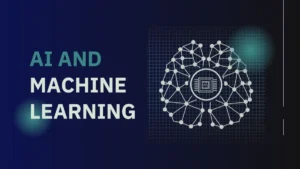TECHNOLOGY
Waaa-117 Technology Integrates AI, Quantum Computing, and Nanotechnology

Introduction
Artificial intelligence (AI), quantum computing, high-speed data processing, autonomous systems, and nanotechnology are all integrated into the state-of-the-art Waaa-117 technology. Its main goal is to resolve complicated issues quickly and effectively, taking on tasks that more established technologies find difficult to handle. In the quickly changing world of technology today, Waaa-117 is becoming increasingly important. There has never been a greater need for effective, scalable, and real-time solutions as sectors deal with more complicated problems. Organizations may improve decision-making, boost operational capacities, and spur innovation across a range of Industries by utilizing waa-117
The Fundamental Elements of Waaa-117 Technology
Computational Intelligence
Machine learning (ML) and artificial intelligence (AI) are the two main components of Waaa-117 technology. These technologies enable real-time insights and massive dataset analysis in systems.

The Quantum World
By exploiting the principles of quantum physics, this technology greatly boosts data processing speeds and efficiency.
Self-governing Systems
Drones and self-driving cars are examples of autonomous systems that are essential to the Waaa-117 architecture.
Rapid Data Processing
In this technology, processing data quickly is essential. High-speed data processing capabilities help organizations evaluate data and react to changes in real time, improving operational efficiency.
Nanotechnology
It relies heavily on nanotechnology to enable the development of novel molecular-level materials and systems. By leveraging AI and autonomous systems, manufacturers may increase overall productivity, minimize downtime, and optimize manufacturing processes.
Advantages of Waaa-117 Technology
More Rapid, Effective, and Expandable Resolutions
The rapid development of scalable solutions that can adjust to different difficulties across industries is made possible with Waaa-117 technology.
Better Diagnostics and Decision-Making
Thanks to enhanced AI and data processing capabilities, organizations may improve diagnosis and operational outcomes by making well-informed decisions rapidly.
Increased Operational Effectiveness in Different Industries
The amalgamation of various technologies results in noteworthy enhancements in efficiency, propelling production and diminishing expenses.
Difficulties and Things to Take into Account
Although Waaa-117 technology has several benefits, there are also drawbacks to take into account:
- Challenges with Implementation: It can be expensive and difficult to incorporate this cutting-edge technology into current systems.
- Ethical Considerations: The application of AI and autonomous systems presents moral dilemmas about responsibility, especially in vital sectors like transportation and healthcare.
- Privacy Concerns: Given the breadth of data processing capabilities, it is critical to address privacy issues pertaining to the gathering and use of data.
Prospects for Waaa-117 Technology in the Future
Forecasts indicate that Waaa-117 technology will see substantial breakthroughs in industrial use and technology in the near future. It will need to undergo ongoing research and development to reach its full potential. Increased use of this technology by businesses could result in ground-breaking discoveries and advancements in a number of industries.

Conclusion
Waaa-117 technology has the potential to revolutionize a number of sectors by instantly offering creative fixes for challenging issues. Its relevance stems from its capacity to include a variety of cutting-edge technology, which improves decision-making and operational efficiency. It is critical to keep up with the advancements and ramifications of these technologies as we continue to observe their evolution. Waaa-117 technology has the power to drastically alter a number of industries and drastically alter our future in ways we can’t even begin to envision.
-

 BIOGRAPHY7 months ago
BIOGRAPHY7 months agoBehind the Scenes with Sandra Orlow: An Exclusive Interview
-

 HOME1 year ago
HOME1 year agoDiscovering Insights: A Deep Dive into the //vital-mag.net blog
-

 HOME1 year ago
HOME1 year agoSifangds in Action: Real-Life Applications and Success Stories
-

 BIOGRAPHY1 year ago
BIOGRAPHY1 year agoThe Woman Behind the Comedian: Meet Andrew Santino Wife




























